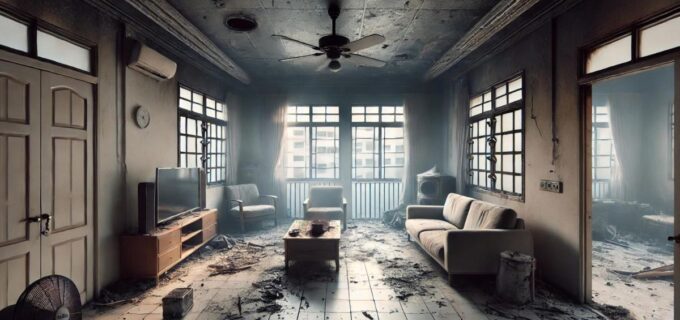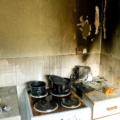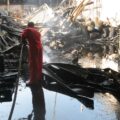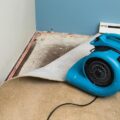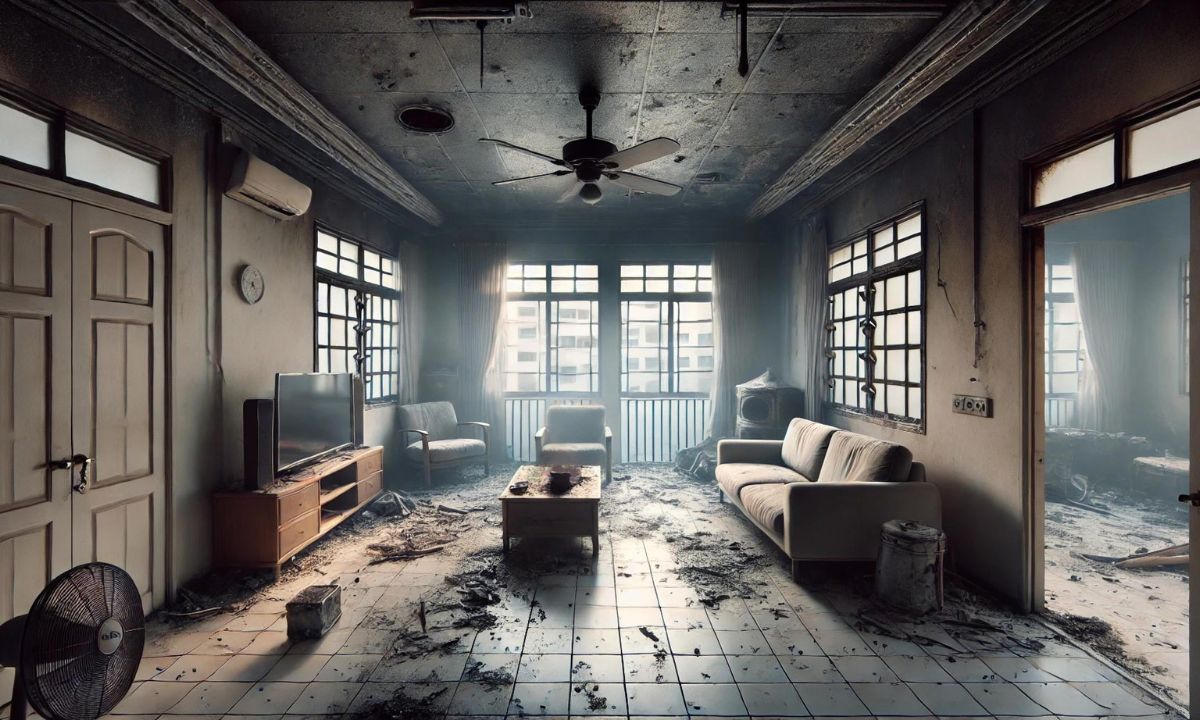
Fire incidents in residential or commercial settings leave behind a trail of devastation extending far beyond the immediate damage caused by flames. The aftermath of a fire introduces a complex challenge: dealing with pervasive soot and smoke damage. These residual effects compromise the structural integrity and aesthetics of a property and pose significant health risks to occupants and restoration personnel.
This comprehensive blog post aims to thoroughly understand soot and smoke damage, its far-reaching implications, and practical strategies for mitigation and restoration. By delving into the science behind soot and smoke formation, exploring their impact on health and the environment, and outlining best practices for cleanup and prevention, this blog is an essential resource for property owners, restoration professionals, and anyone confronted with the daunting task of post-fire recovery.
Understanding Soot and Smoke Damage
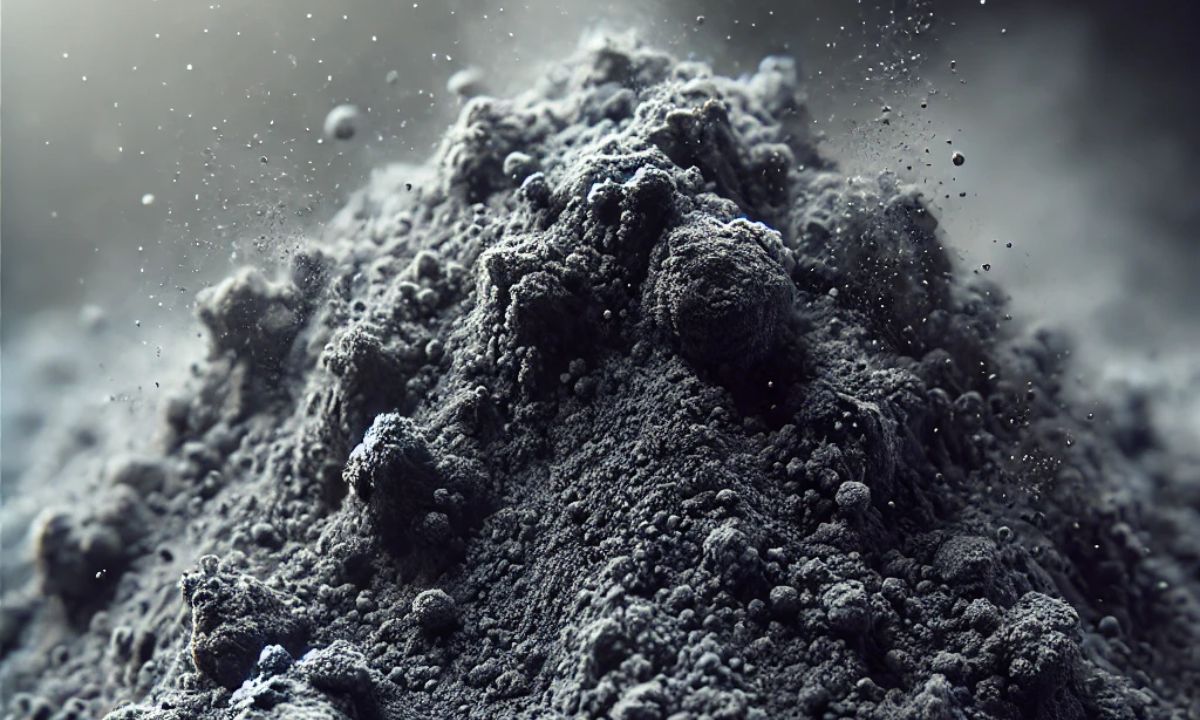
Definition and Composition
Soot is a fine, black, or brown powder primarily composed of carbon particles resulting from the incomplete combustion of organic matter. Its composition can vary depending on the burned materials, including acids, chemicals, metals, soils, and dust. Smoke, on the other hand, is a complex mixture of particles suspended in hot air and gases emitted during the combustion process. The composition of smoke can include carbon monoxide, carbon dioxide, and other potentially toxic substances.
Types of Smoke Damage
-
Wet Smoke: Produced by low-heat, smoldering fires, often involving plastic and rubber materials. Characteristics include:
- Sticky, smeary residues
- Pungent odor
- Difficult to clean due to its tendency to adhere to surfaces
-
Dry Smoke: Results from high-temperature, fast-burning fires fueled by paper and wood. Features include:
- Powdery, dry residue
- Easier to clean compared to wet smoke
- Can still penetrate porous materials deeply
-
Protein Residue: Caused by the evaporation of organic material, common in kitchen fires. Notable for:
- Nearly invisible residues
- Discoloration of paints and varnishes
- Extremely pungent odor
-
Fuel Oil Soot: Often seen in furnace puff backs, characterized by:
- Sticky, dense residues
- Strong odor
- Challenging to clean without specialized products
-
Petroleum Residue: Results from fires involving petroleum products, featuring:
- Thick, oily residues
- Intense odor
- Potential for long-term contamination if not properly addressed
Understanding these distinctions is crucial for developing appropriate cleaning and restoration strategies, as each type of smoke damage requires specific techniques and products for effective removal.
Immediate vs. Long-Term Damage
The effects of soot and smoke damage manifest both immediately and over time:
Immediate Effects
- Discoloration of walls, ceilings, and other surfaces
- Pervasive, acrid odor throughout the affected area
- Staining of porous materials like fabrics and upholstery
- Tarnishing of metal surfaces
Long Term Effects
- Permanent yellowing of walls and ceilings if left untreated
- Corrosion of metal components, including wiring and plumbing
- Deterioration of building materials, compromising structural integrity
- Persistent odors that can penetrate deep into materials
The deceptive nature of smoke damage often leads to underestimation of its severity. While surface-level soot may be visible, smoke particles can penetrate far beyond what is immediately apparent, necessitating thorough and professional assessment and restoration.
Health Risks Associated with Soot and Smoke Exposure
Respiratory Issues
Inhalation of soot and smoke particles presents significant health hazards, particularly to the respiratory system. The American Lung Association highlights several acute and chronic conditions associated with exposure:
- Acute Respiratory Distress: Immediate symptoms can include coughing, wheezing, and shortness of breath.
- Asthma Exacerbation: For individuals with pre-existing asthma, exposure can trigger severe attacks.
- Bronchitis: Both acute and chronic forms can develop or worsen due to smoke inhalation.
- Chronic Obstructive Pulmonary Disease (COPD): Long-term exposure may contribute to the development or progression of COPD.
- Pneumonia: Particulate matter can increase susceptibility to respiratory infections, including pneumonia.
The size of soot particles is a critical factor in their health impact. Particles smaller than 2.5 micrometers (PM2.5) are especially dangerous as they can penetrate deep into the lungs and even enter the bloodstream.
Cardiovascular Complications
Emerging research indicates that exposure to soot and smoke can have significant cardiovascular effects:
- Increased Blood Pressure: Short-term exposure has been linked to temporary spikes in blood pressure.
- Arrhythmias: Particulate matter can interfere with heart rhythms, potentially leading to irregular heartbeats.
- Increased Risk of Heart Attack and Stroke: Long-term exposure is associated with higher incidence of cardiovascular events.
Skin and Eye Irritations
Direct contact with soot and smoke residues can cause various dermatological and ocular issues:
- Contact Dermatitis: Skin exposure can lead to rashes, itching, and inflammation.
- Eye Irritation: Symptoms include redness, burning sensation, and excessive tearing.
- Aggravation of Pre-existing Conditions: Individuals with skin conditions like eczema may experience flare-ups.
Long-Term Health Impacts
Prolonged or repeated exposure to soot and smoke can have lasting health consequences:
Environmental Impact of Soot and Smoke
Air Quality Degradation
The release of soot and smoke into the atmosphere has far-reaching effects on air quality:
- Particulate Matter Pollution: Soot contributes significantly to PM2.5 and PM10 levels in the air, key indicators of air quality.
- Smog Formation: Soot particles can act as nuclei for the formation of smog, exacerbating urban air pollution.
- Climate Impact: Black carbon, a major component of soot, is a short-lived climate pollutant that contributes to global warming.
Soil and Water Contamination
The deposition of soot and smoke residues can have lasting effects on soil and water systems:
- Soil Acidification: The acidic nature of certain smoke components can alter soil pH, affecting plant growth and ecosystem balance.
- Water Pollution: Runoff from soot-contaminated areas can introduce toxic substances into water bodies, impacting aquatic life and water quality.
- Bioaccumulation: Some pollutants in soot can accumulate in the food chain, potentially affecting wildlife and human health.
Damage to Buildings and Infrastructure
Beyond the immediate fire damage, soot and smoke can cause ongoing deterioration:
- Material Corrosion: Soot’s acidic nature can accelerate the corrosion of metals, including structural components and electrical systems.
- Staining and Discoloration: Porous materials like concrete and stone can suffer long-term discoloration from soot penetration.
- HVAC System Contamination: Smoke particles can infiltrate and contaminate HVAC systems, leading to ongoing air quality issues if not adequately addressed.
Immediate Actions Post-Fire
Safety Protocols
Before any restoration work begins, ensuring safety is paramount:
- Professional Assessment: Engage certified fire damage assessors to evaluate structural integrity and identify potential hazards.
- Personal Protective Equipment (PPE): When entering fire-damaged areas, wear appropriate PPE, including respirators, gloves, and protective clothing.
- Ventilation: Implement proper ventilation strategies to reduce airborne particulates, but avoid using HVAC systems until they’ve been professionally cleaned.
Documentation and Assessment
Thorough documentation is crucial for insurance claims and restoration planning:
- Photographic Evidence: Take comprehensive photos and videos of all damaged areas and items.
- Inventory Creation: Compile a detailed inventory of damaged possessions, including make, model, and estimated value.
- Professional Damage Report: Obtain a comprehensive damage assessment report from certified professionals.
Initial Containment and Mitigation
Immediate actions can prevent further damage and facilitate more effective restoration:
- Water Removal: Address any water damage from firefighting efforts to prevent mold growth.
- Corrosion Prevention: Apply corrosion-inhibiting products to metal surfaces to prevent long-term damage.
Cleaning and Restoration Techniques
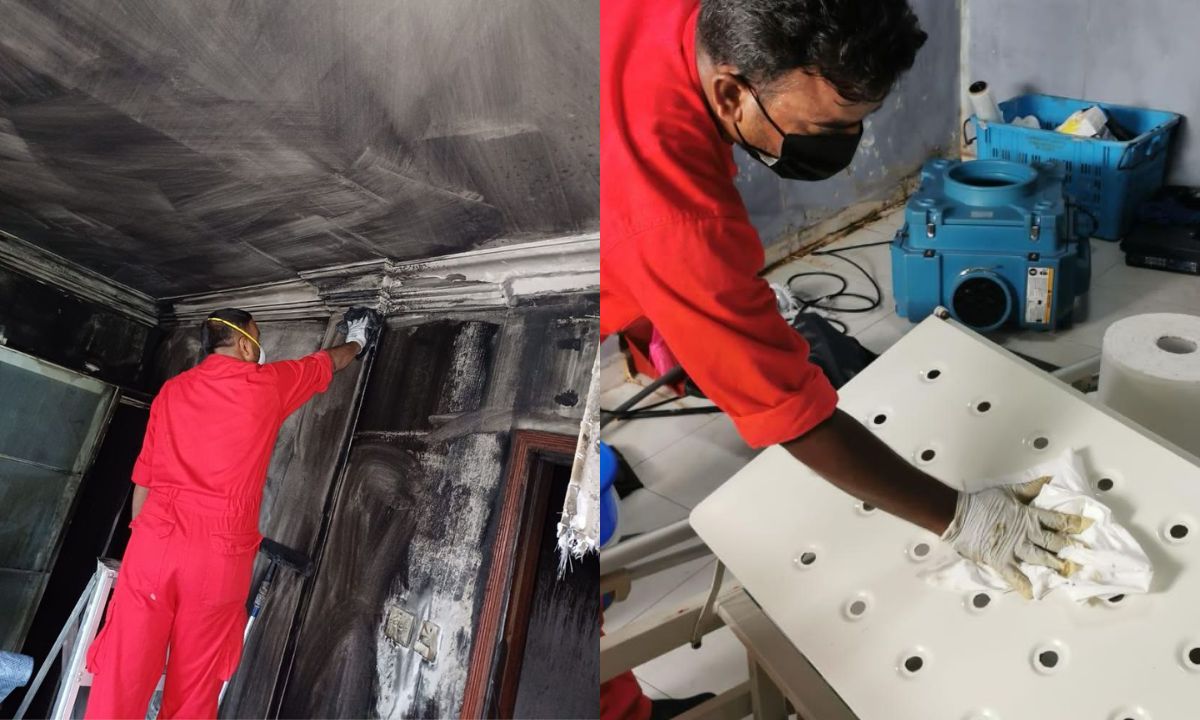
Professional Restoration Services
While minor smoke damage might be addressable through DIY methods, professional services are often necessary for comprehensive restoration:
- Specialized Equipment: Industrial-grade air scrubbers, ozone generators, and thermal foggers for effective deodorization and particle removal.
- Expert Knowledge: Professionals can identify hidden damage and apply appropriate cleaning techniques for different materials and smoke types.
- Safety Compliance: Certified restoration companies adhere to safety standards and regulations, ensuring proper handling of hazardous materials.
Soot Removal Methodologies
Effective soot removal requires a multi-faceted approach. Dry cleaning methods are essential in the initial stages of soot removal. HEPA vacuuming is a crucial first step, using vacuums with HEPA filters to remove loose soot particles without redistributing them. Chemical sponges, designed to lift soot from surfaces without smearing, are also highly effective for dry cleaning.
Wet cleaning techniques are used for more stubborn soot deposits. Enzymatic cleaners are particularly useful for breaking down protein-based soot residues, while alkaline cleaners are effective for removing oily soot deposits. For extremely resistant soot on sturdy surfaces, abrasive cleaning methods such as media blasting and soda blasting can be employed.
Odor Neutralization Strategies
Eliminating smoke odor requires targeting both airborne and absorbed odors. Ozone treatment is a powerful method where ozone molecules break down odor-causing compounds at the molecular level. Thermal fogging is another effective technique, where deodorizers are heated and dispersed as a fine mist, capable of penetrating porous materials. Hydroxyl generation, which uses UV light to produce hydroxyl radicals, is a safe alternative for occupied spaces, neutralizing odors without harmful side effects.
AHU System Restoration
Air Handling Unit (AHU) is a component of the HVAC system used to treat, regulate and circulate air. Thorough cleaning of AHU systems is crucial to prevent recontamination of the cleaned space. Duct cleaning is a primary focus, using specialized brushes and vacuum systems to remove soot from ductwork. Filter replacement is essential, with high-efficiency filters installed to capture any remaining particulates. Finally, coil cleaning, including both evaporator and condenser coils, ensures efficient operation and prevents odor recirculation throughout the building.
Preventive Measures and Future Preparedness
Advanced Fire Detection and Suppression Systems
Investing in modern fire safety technology can significantly reduce the risk and extent of fire damage:
- Smart Smoke Detectors: Install interconnected detectors that can alert homeowners remotely.
- Sprinkler Systems: Consider automatic sprinkler systems, especially in high-risk areas like kitchens.
- Fire-Resistant Safes: Use fire-rated safes to protect important documents and valuables.
Regular Maintenance and Inspections
Proactive maintenance can prevent many fire hazards:
- Electrical System Checks: Schedule regular inspections of wiring and electrical panels.
- Dryer Vent Maintenance: Regularly clean dryer vents to remove lint accumulation, a common fire source.
Conclusion
The aftermath of a fire extends far beyond the immediate destruction caused by flames. Soot and smoke damage present complex challenges that require a comprehensive understanding and strategic approach to address effectively. From the intricate composition of soot and smoke to their far-reaching health and environmental impacts, the scope of post-fire restoration is broad and nuanced.
Property owners and restoration professionals can mitigate the long-term effects of soot and smoke damage by implementing immediate safety measures, employing professional restoration techniques, and adopting preventive strategies. The key lies in prompt action, thorough assessment, and specialized knowledge and technology application.
As our understanding of the long-term impacts of fire residues continues to evolve, so must our approaches to restoration and prevention. By staying informed about the latest research and best practices in fire damage restoration, we can better protect our health, properties, and environment from the insidious effects of soot and smoke damage.
